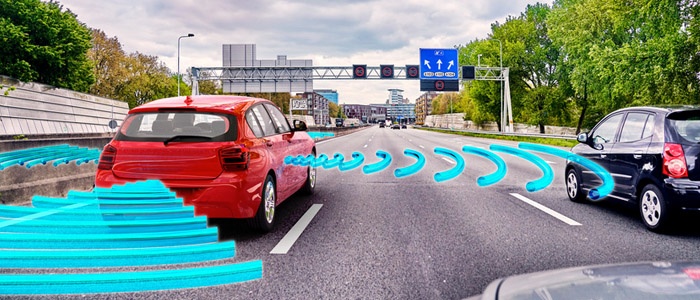
Companies like Google, Tesla, and BMW are leading the charge on autonomous vehicles—but regulatory concerns may slow them down.
From integrated smart homes to the introduction of face recognition software in cell phones, technology continues its rapid evolution. One anticipated tech innovation that could bring truly sweeping change: autonomous vehicles. But while major companies continue developing technology suited for vehicles in an autonomous future, there’s a potential major roadblock that could bring it all to a halt: government legislation.
Even as we move closer to driverless cars, the reality is that most auto laws are outdated and could prevent this new technology from taking off. So, how does legislation need to shift to make way for the future? The Society of Automotive Engineers developed five levels of classification for autonomous vehicles and most require legislative reform. Let’s take a look at these different levels and the necessary changes.
Level One: Driver assistance
Believe it or not, autonomous vehicles are already on the road—just in a simpler form. Level One autonomous vehicles integrate innovations like adaptive cruise control, anti-lock braking, lane-departure warnings, adaptive headlights, and self-acceleration. Despite their advanced features, these vehicles still need complete human control. Because of the still-necessary human element, many people don’t understand that these features are considered autonomous and, as a result, Level One vehicles have managed to avoid regulation.
Level Two: Partial automation with driver assistance
Level Two vehicles offer a step up in technological complexity – think self-parking, lane centering, and even autopilot capabilities that allow the vehicle to take control and assist the human operator.
Since debuting with Tesla in 2014, autopilot systems have traversed testing and navigated regulations before becoming legal in 2017 when the U.S. House of Representatives passed a driverless car bill allowing further Level Two development. But while the government got on board with autopilot in 2017, the legal landscape has shifted in the aftermath of two fatal accidents. These accidents have convinced many lawmakers that they must implement stricter and safer Level Two requirements.
Level Three: Vehicle-controlled, safety-critical decisions
At Level Three, autonomous vehicles decide when to take control and when to shift responsibility back to the driver. Despite access to this feature, many manufacturers haven’t quite developed a taste for it yet and have kept Level Three vehicles off the market. In one example, Google had a Level Three vehicle all the way back in 2012, but the company realized that human drivers were too trusting and slow to react when their vehicle put control back in the driver’s hands.
To date, only one manufacturer is striving to release a Level Three vehicle anytime soon. Audi has developed their newest R8 model which incorporates a feature called AI Traffic Jam Pilot. While this system has the ability to reduce accidents, the U.S. won’t permit their introduction. The reason? There’s currently no federal law allowing this level of automation, so regulations would need to be passed on a state-by-state basis. Additionally, items like signage, lane markings, and road configurations vary across the U.S., which could cause dangerous processing issues for an AI system.
Level Four: High-level automation
Here’s where things go full science fiction. At Level Four, automated vehicles can complete an entire trip with no driver intervention or control except in very specific situations like emergency-level weather conditions. As yet, no Level Four vehicles have been brought to market because the technology is so advanced. Additionally, from a regulatory perspective, the government is struggling to figure out how to handle this level of technology, with their primary concerns including liability questions, cybersecurity, and personal privacy.
Level Five: Total automation
Imagine riding in your vehicle with your feet kicked up playing video games on your tablet. Level Five autonomous vehicles turn this dream into a reality requiring no human control whatsoever. That’s right: they’re driverless. But again, this level of technology creates concerns for lawmakers, manufacturers, and passengers. For example, will driver licenses be necessary? If so, what do those look like? To get those answers, we’ll have to wait until at least 2021 when Audi claims their self-operating model will be ready to go.
While most of us have already experienced some version of vehicle autonomy, a truly driverless ride is likely still years away. From regulatory concerns to insurance liabilities, the risks associated with autonomous vehicles are real. And while the U.S. is currently leading the way in autonomous vehicle development, they may want to look to Europe for a safety-first approach. Despite strides toward the future, the world still has a long way to go before every passenger can sit back, relax, and enjoy the automated experience.
Looking for more insight into the future of the auto industry? Take a look at how telematics is changing the landscape for drivers and insurers alike.
Fortegra® is the brand name for the insurance, specialty underwriting and warranty solution operations of Fortegra Financial Corporation and its subsidiaries.



